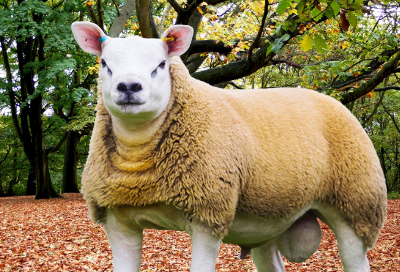Texel sheep are well known for their advantages to the farming industry all over the world. A Texel sheep is named after the Isle of Texel in the Netherlands. This sheep is thought to have originated in the nineteenth century. Farmers in the area produced a breed of sheep that could grow large while using relatively little food.
Advantages of Texel Sheep
High Yield of Meat
The extraordinary meat output of Texel sheep is widely appreciated. They have a distinctive genetic make-up that allows them to generate more lean meat than other breeds. Due to their capacity to quickly transform feed into high-quality meat, Texel sheep are a wonderful choice for farmers that place a high priority on meat production.

Superior Meat Quality
The outstanding quality of the meat produced by Texel sheep is well known, in addition to their large meat yield. Texel sheep's flesh is soft, juicy, and well-marbled, making it extremely popular in the market. The greater meat quality of the breed draws buyers looking for a premium product, resulting in increased demand and potentially higher profitability for producers.
Fast Growth Rate
The speedy growth of Texel sheep enables producers to quickly reach marketable weights. This quality is advantageous in meat production systems where rapid turnaround and efficiency are essential. Farmers may be able to improve their production cycles and boost profitability by using the breed's capacity to mature at a young age and attain market weight.
Good Feed Efficiency
Texel sheep can efficiently turn feed into meat with little waste because of their high feed conversion rates. This trait is helpful for farmers who want to make the most of their feed supplies and spend as little money as possible. Due to the Texel sheep's high feed efficiency, sustainable farming methods and increased profitability are possible.
Environmental Adaptability
Texel sheep are appropriate for a variety of geographical settings due to their adaptability to a wide range of climates. They can tolerate extreme weather, such as chilly temperatures and windy coastal regions. This adaptability enables Texel sheep to flourish in a variety of agricultural environments, thereby increasing their potential for global distribution.
Hardy and disease resistant
Farmers frequently choose Texel sheep because of their hardiness and disease resistance. This reduces their risk of illness and the need for medical attention, which can ultimately save farmers time and money.
Wool Production
Texel sheep produce an excellent dense fleece of medium grade, appropriate for fine carpet yarns, hosiery, and knitting. The wool is mostly white, measuring between 80 to 150mm in length and 32 to 40 microns in fineness. It is ideal for use in many different crafts, including hand spinning and felting.
Disadvantages of Texel Sheep
Limited Maternal Instinct
The reduced maternal instinct of Texel sheep is one of their drawbacks. Texel ewes may not display the same level of maternal behavior as other breeds since they are more focused on producing meat. This may lead to problems during lambing, such as inadequate care for young lambs. To ensure the survival and well-being of Texel lambs, farmers must regularly monitor and take particular care.
Increased Lambing Difficulties
Texel sheep are known for having more challenging lambing, especially when Texel rams are bred with other breeds. Due to the breed's strong build, larger lambs may be born, which could complicate the ewe's labor. To ensure effective births and both the ewe and lamb's welfare, close monitoring and expert intervention may be necessary during lambing.
Fertility Problems
In comparison to other breeds, Texel sheep may have reduced fertility. This implies that they might have difficulties during reproduction or childbirth.











0 Comments